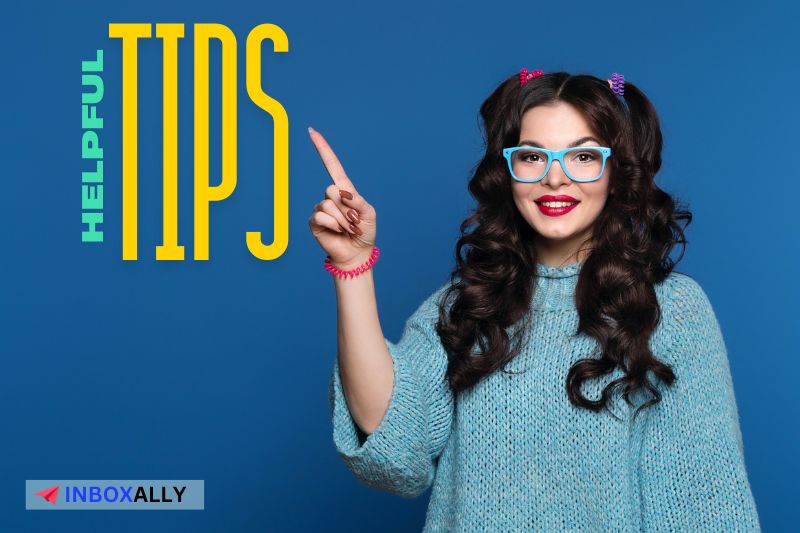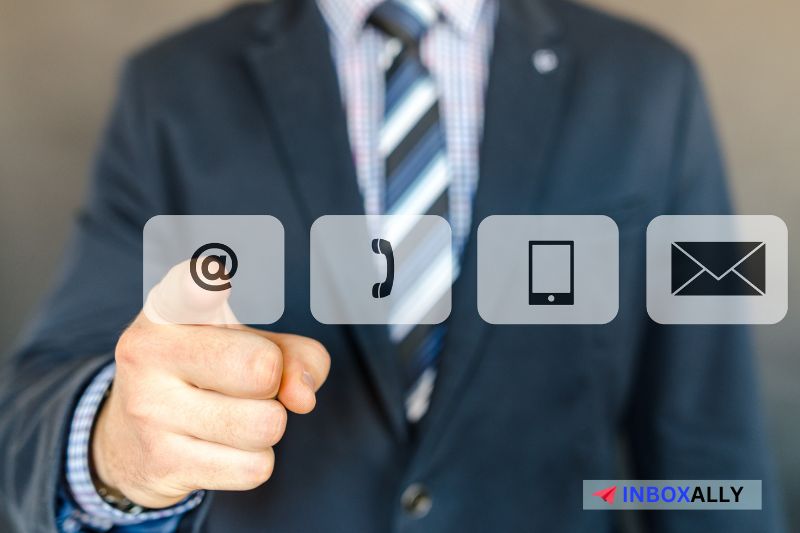Embora o LinkedIn seja uma das maiores plataformas de rede profissional, o simples fato de se inscrever em uma conta não é suficiente para que você esteja na frente das pessoas certas. Seja um emprego dos sonhos, uma parceria em potencial ou um cliente, você deve tomar a iniciativa e entrar em contato. O envio de mensagens frias é uma maneira comum de fazer isso.
Mas como você começa, o que você diz e isso é realmente eficaz? Essas são preocupações comuns quando você começa a enviar mensagens frias pelo LinkedIn. Estamos aqui para ajudar você a resolver cada uma delas.
Como você começa a enviar mensagens frias no LinkedIn?
Uma estratégia de contato a frio pode ser intimidadora. Você nunca sabe como o prospect pode responder ou reagir. No entanto, enviar mensagens frias no LinkedIn não precisa ser tão complicado.
Pense nisso como se você estivesse iniciando uma conversa, mas de maneira profissional.
Há duas maneiras principais de fazer isso. Você pode enviar uma mensagem fria do LinkedIn gratuitamente usando uma conta básica. Mas você estará limitado a enviar mensagens apenas para seus contatos. Como alternativa, você pode enviar uma mensagem para um cliente potencial sem uma conexão usando o InMail Messages.
O InMail é um recurso de mensagens incorporado que pode ser acessado por meio de uma conta premium do LinkedIn. A permissão de créditos de mensagens do InMail varia de acordo com seu plano de assinatura. No entanto, lembre-se de que, se um cliente potencial optar por não receber nenhuma mensagem do InMail, esse recurso não será tão útil nesse caso.
Mas antes de pensar em enviar uma mensagem fria no LinkedIn, aqui estão algumas coisas que você precisa fazer primeiro:
- Otimize seu perfil no LinkedIn. Seu perfil é a primeira coisa que os clientes em potencial verão quando receberem sua mensagem, portanto, você deve garantir que ele cause uma boa primeira impressão.
- Seja ativo na plataforma. Compartilhe conteúdo perspicaz sobre sua área de especialização, comente em outras publicações e participe de debates. Isso ajudará você a parecer mais confiável para seus clientes em potencial. Isso também ajuda a aquecer sua conta antes de você começar a enviar mensagens frias.
- Defina suas metas. Descubra o que você deseja alcançar em um determinado período de tempo. Pergunte a si mesmo quem é o seu alvo, o que você gostaria que ele fizesse e, o mais importante, o que você está oferecendo a ele.
Depois que você tiver construído uma presença significativa no LinkedIn e tiver clareza sobre o que deseja alcançar, estará pronto para começar a enviar mensagens frias do LinkedIn usando as etapas a seguir:
1. Criar uma lista de clientes potenciais
![]()
Primeiro, faça sua pesquisa para encontrar fatos genuínos para criar uma persona que ajudará a definir seus clientes potenciais ideais. Em seguida, vá para o LinkedIn e procure as pessoas que atendem aos critérios da persona do cliente potencial que você criou a partir de sua pesquisa. Se você tiver uma assinatura do LinkedIn Sales Navigator, várias ferramentas podem ajudar. Mas você também pode fazer isso gratuitamente em sua conta básica, simplesmente:
- Vá para a barra de pesquisa em sua conta do LinkedIn.
- Digite as palavras-chave que melhor se relacionam com seus clientes potenciais ideais (ou seja, cargo, setor, local etc.).
- Selecione os clientes em potencial mais adequados nos resultados da pesquisa e adicione-os à sua lista, juntamente com links para os perfis deles.
2. Pesquise cada cliente potencial da sua lista.
Você deve seguir uma abordagem direcionada para campanhas bem-sucedidas de divulgação fria no LinkedIn. Reserve um tempo para examinar o perfil de cada cliente potencial no LinkedIn. Descubra o que eles fazem e suas experiências.
Você também pode procurar por eles on-line, pesquisando o site oficial (especialmente para empresas). Esses insights o ajudarão a entender como você pode beneficiá-los e a criar uma mensagem mais personalizada. Você pode até encontrar desenvolvimentos recentes que seriam ótimos para iniciar uma conversa.
3. Crie uma ótima mensagem fria.
Quando se trata de mensagens frias de divulgação, a primeira mensagem que você envia é muito importante. É o contato inicial que você terá com um cliente potencial que define o tom das conversas posteriores. Entraremos em mais detalhes sobre como escrever as melhores mensagens frias do LinkedIn na próxima seção.
Lembre-se de que a mensagem inicial deve ser curta, simples e direta. Personalize a mensagem do LinkedIn para cada cliente em potencial. Você pode fazer isso especificando o setor, o nome da empresa, a função etc.
4. Sempre faça o acompanhamento
A maioria das pessoas ignora a importância das mensagens de acompanhamento. A verdade é que as pessoas estão ocupadas e, por isso, é comum que você não receba uma resposta na primeira vez. É por isso que uma mensagem de acompanhamento é vital para lembrar seus clientes potenciais de que você entrou em contato com eles e mostrar que valoriza a resposta deles.
Além de lembrá-los do motivo pelo qual você entrou em contato, você pode compartilhar mais valor sobre como sua conexão os beneficiaria. Você também pode tentar usar uma chamada para ação diferente na qual ele possa estar mais interessado. Mas envie apenas uma mensagem de acompanhamento. Se ainda assim não obtiver uma resposta, você pode presumir que o cliente potencial está ocupado ou não está interessado e seguir em frente.
5. Analise o desempenho de sua campanha de mensagens frias no LinkedIn.
Quando você envia mensagens frias no LinkedIn, é importante analisar o desempenho da campanha. Isso lhe dará uma visão melhor do que você está fazendo certo e do que precisa ser melhorado. Você pode usar uma ferramenta de automação do LinkedIn ou pode registrar manualmente as métricas em um software simples como o Microsoft Excel. Algumas das principais métricas que você deve observar incluem:
- Número de mensagens do LinkedIn enviadas
- Taxa de resposta positiva
- Taxa de resposta negativa
- Taxa de resposta neutra
- Taxa de resposta geral, etc.
Dicas para escrever mensagens frias no LinkedIn que obtêm respostas
Veja a seguir algumas dicas úteis que você deve ter em mente ao elaborar sua mensagem fria no LinkedIn:
Procure construir um relacionamento
O principal objetivo do LinkedIn é formar conexões e construir redes. Essa deve ser sua meta ao escrever sua mensagem fria no LinkedIn. Lembre-se de que é menos provável que as pessoas respondam a um discurso de vendas. Portanto, concentre-se mais em iniciar uma conversa do que em empurrar seu produto ou serviço.
Não se concentre muito em você.
O maior erro que você pode cometer é focar em si mesmo ou no que você faz. Embora seja importante se apresentar, as pessoas estão mais interessadas no que elas podem se beneficiar ao interagir com você.
Portanto, quando você escrever sua mensagem fria de contato, mantenha a introdução breve e faça com que o restante da mensagem seja sobre o cliente potencial. Ofereça valor a eles, primeiro descobrindo o ponto problemático deles. Em seguida, use isso para falar sobre como você pode oferecer a eles soluções exclusivas ou insights úteis para ajudá-los.
Personalize cada mensagem fria.
Embora ter um modelo de mensagem fria no LinkedIn possa ajudar você a economizar tempo, as mensagens personalizadas lhe darão mais respostas. As pessoas ficam mais dispostas a trabalhar com você se você mostrar que as entende, entende seus negócios ou suas necessidades específicas. Portanto, você precisa fazer mais do que apenas especificar os nomes delas.
Reserve um tempo para pesquisar mais sobre cada cliente potencial. Descubra os interesses do seu cliente potencial, experiências profissionais anteriores ou se vocês compartilham uma conexão mútua. Todos esses são pontos em comum que você pode usar para criar um relacionamento e mostrar seu interesse em trabalhar com eles. Você também pode consultar os sites oficiais deles e mencionar notícias relevantes da empresa e suas percepções sobre elas.
Seja breve
Se você estiver se perguntando qual deve ser o tamanho de uma mensagem fria no LinkedIn, considere que, diferentemente dos e-mails, essa é uma mensagem instantânea. Você terá apenas alguns segundos da atenção do seu cliente potencial, portanto, mantenha-o simples e curto. Você pode trabalhar com a limitação de palavras do LinkedIn.
O LinkedIn tem um limite de 300 a 2000 caracteres (cerca de 60 a 350 palavras) por mensagem, dependendo se você está usando uma conta Básica ou Premium. Isso é mais do que suficiente para uma conversa inicial. Mesmo assim, não seja abrasivo. Mantenha um tom profissional, mas amigável, e ofereça valor, concentrando-se nas necessidades e nos interesses do cliente potencial.
Tenha uma chamada à ação clara.
Você deve dizer claramente aos clientes potenciais o que deseja que eles façam depois de ler sua mensagem. Isso ajudará você a continuar a conversa. Dependendo da sua intenção, você pode sugerir uma breve ligação telefônica ou uma data ideal para se encontrarem ou solicitar o e-mail deles para conversar mais.
Mas peça apenas uma ação para não sobrecarregá-los. Lembre-se de que o principal objetivo das mensagens frias no LinkedIn é estabelecer uma comunicação inicial com um cliente em potencial. Não os pressione tentando fazer uma venda imediata ou fechar um negócio.
Há muitos exemplos de mensagens frias do LinkedIn para ajudar a inspirá-lo, mas você pode encontrar alguns dos melhores modelos de mensagens frias do LinkedIn para começar aqui e aqui.
Qual é a taxa de sucesso das mensagens frias no LinkedIn?
As pessoas relataram ter conseguido um emprego ou encontrado leads qualificados por meio de mensagens frias no LinkedIn. Empresas como a Dux-soup relatam como o LinkedIn ajudou a impulsionar os esforços de geração de leads de seus clientes, aumentando seus compromissos de vendas de 0 para mais de 100 em questão de poucos meses.
Esse sucesso, no entanto, não é alcançado simplesmente enviando mensagens frias aleatórias aos clientes em potencial. Certos fatores também desempenham um papel importante.
Além de elaborar uma mensagem personalizada e cheia de valor, o momento também é crucial. Por exemplo, de acordo com as estatísticas do LinkedIn, é 16% menos provável que você receba uma resposta de uma mensagem de InMail enviada aos sábados. O horário recomendado é entre 9 e 10 horas da manhã nos dias úteis.
Sua abordagem também é importante. Muitas pessoas que recebem essas mensagens costumam reclamar, pois algumas mensagens parecem ser spam e desesperadas. Isso pode acontecer se você não dedicar tempo para se conectar com um cliente em potencial e simplesmente for direto para a venda difícil.
Com base nas estatísticas do LinkedIn, você tem uma chance maior de obter uma resposta se você e o prospect tiverem um ponto em comum ou conexões mútuas. Por exemplo, você tem 21% mais chances de obter uma resposta de um cliente potencial se estiver no mesmo grupo do LinkedIn. 27% mais chances de resposta se você fizer referência a um empregador em comum e 46% mais chances se ele estiver conectado a alguém que trabalha com você. Portanto, reserve um tempo para realmente entender seus clientes potenciais e se conectar com eles em um nível pessoal.
Mensagens frias: LinkedIn vs. E-mail
Quando se trata de diferentes abordagens de mensagens frias, tanto o LinkedIn quanto os e-mails são opções viáveis com suas vantagens exclusivas. Decidir qual delas é a melhor para você dependerá de suas metas de alcance. Mas, primeiro, vamos entender como as duas se comparam.
O LinkedIn assume a liderança quando se trata de taxas de abertura e de resposta. Com base nas estatísticas, a taxa de abertura de e-mails frios é de 23,9% e a taxa de resposta é de 8,5%, enquanto o InMail tem uma taxa de resposta de 18 a 25%. Isso se deve ao fato de o LinkedIn ser uma plataforma profissional confiável e, como o InMail é um recurso premium, poucas pessoas o estão usando para entrar em contato com clientes em potencial.
As mensagens frias no LinkedIn também são menos afetadas por problemas de capacidade de entrega em comparação com os e-mails frios. Desde que você tenha uma conexão com o cliente em potencial ou esteja usando o recurso InMail, é garantido que sua mensagem chegará à caixa de entrada. Esse nem sempre é o caso dos e-mails frios.
Fatores como reputação do e-mail, qualidade do conteúdo do e-mail, taxas de rejeição etc. podem facilmente levar seu e-mail frio para a pasta de spam. Felizmente, há maneiras de evitar isso, seguindo as práticas recomendadas de envio de e-mails frios e utilizando uma boa ferramenta de entregabilidade de e-mails, como o Inboxally, para garantir sempre o posicionamento correto na caixa de entrada.
No entanto, o LinkedIn também tem suas desvantagens. A maior delas são as limitações de alcance. Com o InMail, você só pode enviar um máximo de 50 mensagens por mês, dependendo do seu plano. Embora você possa enviar o máximo de mensagens diretas gratuitas do LinkedIn, você está limitado apenas às pessoas com as quais tem conexões. Como você não pode enviar mais de 20 a 25 solicitações de conexão por dia, isso limita seu alcance.
Com o cold e-mailing, por outro lado, você pode enviar com segurança mais de 100 e-mails por dia. Mas certifique-se de que você dedique tempo para aquecer adequadamente seu e-mail para evitar que seja sinalizado como spam. O Inboxally tem um ótimo recurso que pode ajudar a facilitar esse processo.
Diga adeus aos longos períodos de aquecimento! Nosso serviço de aquecimento de e-mail ajuda você a criar uma reputação sólida para seu IP e domínio mais rápido do que nunca. Aumentando gradualmente seus envios de e-mail e aproveitando nossos e-mails semente para engajamento, você pode ganhar rapidamente a confiança dos provedores de caixa de correio. Com o InboxAlly, você começa hoje sua jornada para obter um melhor posicionamento na caixa de entrada e taxas de abertura mais altas.
Portanto, no final das contas, o LinkedIn seria uma abordagem melhor se você estiver visando a um público específico ou a um grupo de profissionais. Os e-mails frios são melhores para uma abordagem de alcance mais ampla e econômica. Como alternativa, você pode obter mais resultados combinando seus e-mails frios com mensagens do LinkedIn. Para obter mais informações sobre como isso é possível, leia nosso guia detalhado sobre “Cold Email vs LinkedIn“
Domine a arte do alcance frio!
Para dominar o envio de mensagens frias no LinkedIn, você precisa de uma abordagem cuidadosa. Personalize cada mensagem, primeiro criando uma conexão por meio de interesses compartilhados. Em seguida, concentre-se nas necessidades do cliente potencial e em como você pode oferecer valor a ele. De modo geral, não espere respostas instantâneas – tempo e paciência são fundamentais para que você construa relacionamentos a partir de contatos frios.
Você também pode aumentar seus esforços de mensagens frias no LinkedIn combinando-as com o envio de e-mails frios. Uma ferramenta como o Inboxally pode ajudar você a aumentar a eficácia de sua campanha de e-mail frio para complementar sua estratégia no LinkedIn.
Experimente o poder do InboxAlly com uma avaliação gratuita de 10 dias! Descubra como o InboxAlly pode melhorar a capacidade de entrega e as taxas de envolvimento de seus e-mails. Com nosso teste gratuito de 10 dias, você pode ver os resultados por si mesmo, sem nenhum compromisso. Comece sua avaliação gratuita agora.



